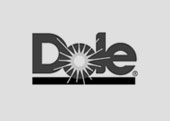APPLYING COMMON SENSE TO INDUSTRY EXPERTISE
Most companies start out with efficient processes in place. But over time, those processes become less clear, eventually leading to gross inefficiencies. Our experience helps us to more easily spot problems and resolve them using the right methodology for your industry. Plus, our industry insight helps us grasp the bigger challenges you face, and then communicate solutions in language you understand.































